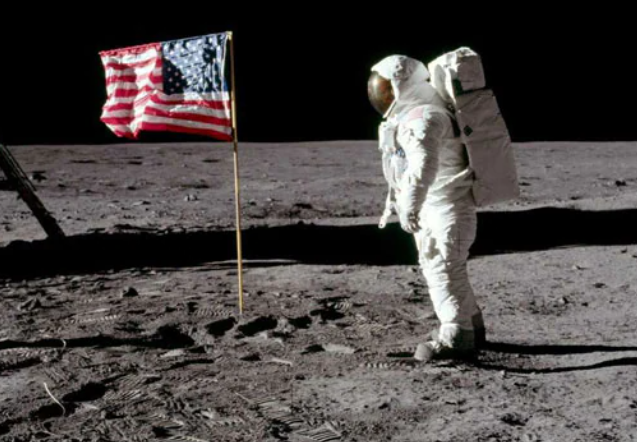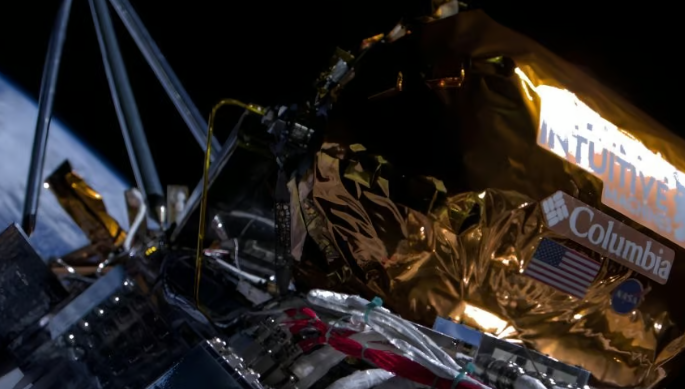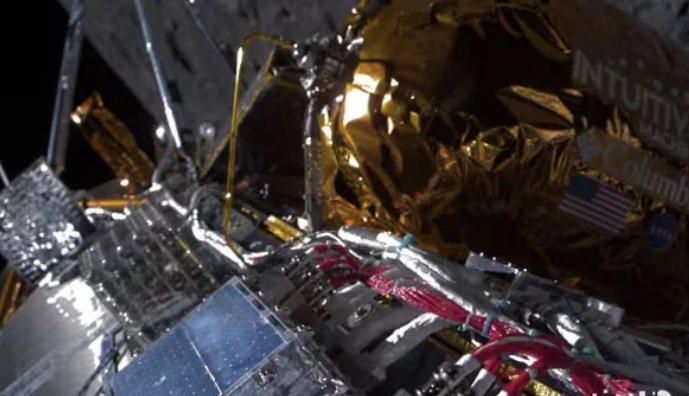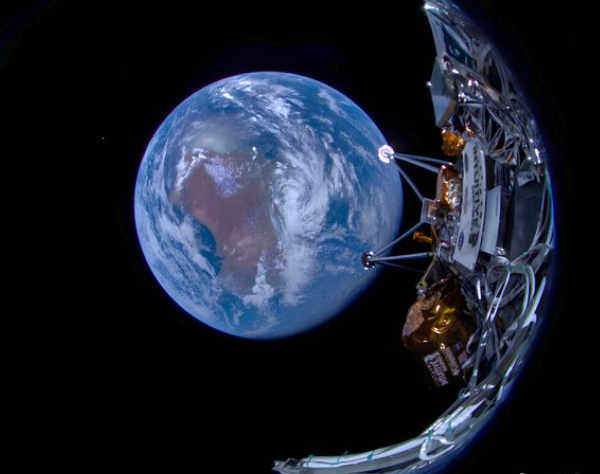
Odysseus Makes Historic Return with First US Moon Landing in Over 50 Years, Milestone Achieved
Odysseus Makes Historic US Moon Landing After 50-Year Hiatus
Odysseus, the intrepid spacecraft, embarked on its descent from orbit, meticulously maneuvering toward the lunar surface with precision, seeking out a relatively flat terrain amidst the rugged landscape of cliffs and craters near the south pole. This marked a significant milestone as a private lander, under the auspices of Intuitive Machines, achieved what hadn’t been done by the United States in over half a century – a successful touchdown on the moon.

However, the triumphant moment was initially shrouded in uncertainty as the communication link between the lander and mission control faltered, providing only a faint signal back to Earth. Despite the intermittent connection, the team at Intuitive Machines, stationed at their nerve center in Houston, remained resolute. Mission director Tim Crain’s confirmation of the craft’s landing brought a collective sigh of relief, albeit tinged with anticipation for more information about its status and location.
As data began to trickle in, the mood shifted from apprehension to jubilation. Intuitive Machines CEO Steve Altemus hailed the achievement, acknowledging the nail-biting tension that preceded it while proudly declaring, “We are on the surface and we are transmitting. Welcome to the moon.” The successful landing not only reestablished the United States’ presence on the lunar landscape but also positioned Intuitive Machines as the first private entity to accomplish such a feat, joining the ranks of only five countries to achieve lunar landing.
The significance of this milestone reverberated across the space exploration community, with accolades pouring in from peers and stakeholders alike. Astrobotic Technology, another U.S. company engaged in lunar exploration, extended congratulations, emphasizing the magnitude of Intuitive Machines’ achievement. Even NASA Administrator Bill Nelson took to social media to commend the landing, highlighting the remarkable accomplishment in the pursuit of lunar exploration.
The journey leading up to the historic touchdown was fraught with challenges and uncertainties, underscoring the inherent risks associated with space exploration. A last-minute glitch with the lander’s laser navigation system added an extra layer of tension, requiring swift improvisation from the flight control team. Despite the setback, the team’s resourcefulness, coupled with the utilization of an experimental NASA laser system, ensured a course correction, allowing Odysseus to navigate its descent and find its intended landing spot.
Intuitive Machines’ mission extends beyond mere exploration; it signifies a pivotal step in commercializing lunar endeavors, with NASA’s support aimed at fostering a burgeoning lunar economy. The payload carried by Odysseus reflects a diverse array of scientific experiments and commercial ventures, ranging from tech and navigation experiments for NASA to collaborations with Columbia Sportswear and sculptor Jeff Koons.

As the world celebrates this momentous achievement, it also underscores the enduring spirit of exploration and innovation that propels humanity’s quest to unravel the mysteries of the cosmos. With each successful mission, we inch closer to realizing our aspirations of sustained lunar presence and unlocking the boundless potential that lies beyond Earth’s confines.
The successful landing of Odysseus marks a significant leap forward in humanity’s quest to explore and utilize the resources of the moon. With its target landing site situated closer to the lunar south pole than any previous spacecraft, Odysseus offers tantalizing possibilities for scientific discovery and commercial exploitation.
One of the primary objectives of the mission is to investigate the presence of water ice in the perpetually shadowed regions near the lunar poles. Water is a critical resource for future lunar exploration and potentially a valuable commodity for sustaining human presence on the moon and beyond. The data gathered by Odysseus will help scientists better understand the distribution and abundance of water ice on the moon’s surface, laying the groundwork for future missions aimed at extracting and utilizing this vital resource.
For the latest updates-click here.


